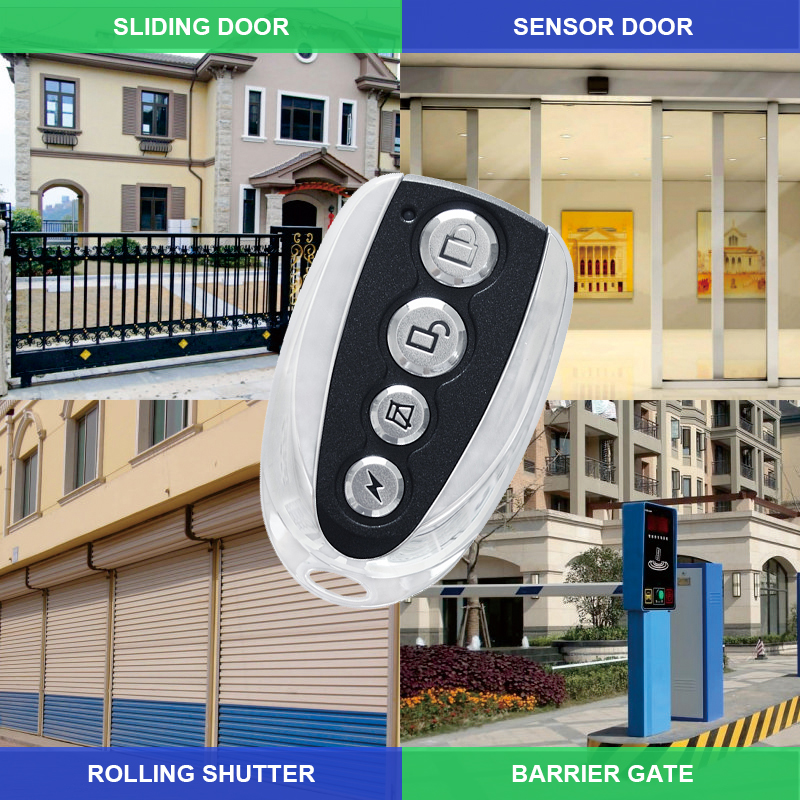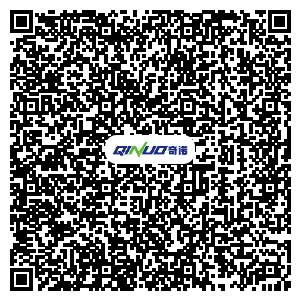With the advancement of technology, garage door remotes have become increasingly powerful, providing numerous conveniences to users. Whether for city dwellers or families with multi-car garages, garage door remotes have become indispensable tools. However, as these devices gain more functions, users are expecting an even simpler installation and setup process. Simplifying the installation and programming of remotes, enabling quick and easy pairing with the garage door system, is crucial to improving customer satisfaction.
In this article, we will discuss the ease of installation and programming of garage door remotes, exploring the installation process, programming methods, common issues and solutions, user expectations, and future trends. The goal is to highlight how streamlining these processes enhances the overall user experience.

1. Remote Installation Process
Installing a garage door remote involves more than just physical assembly—it generally includes both hardware installation and software setup. A convenient installation process can greatly reduce users' reliance on technical support, allowing more people to complete the installation on their own.
1.1 Hardware Installation
Hardware installation typically involves installing the remote's batteries, setting up the garage door receiver, and establishing any necessary physical connections between the remote and the receiver. The design of the remote should aim to make the hardware installation as simple as possible. Below are some common optimization measures:
Battery Installation: Most garage door remotes use standard batteries such as AA or 9V. A removable battery cover and clearly marked positive and negative terminals help users easily install the batteries. Some remotes also use rechargeable batteries, eliminating the need for frequent replacements and reducing concerns about battery life.
Garage Door Receiver Installation: The receiver is usually a module installed on the garage door motor. Modern receivers often use wireless technology, meaning they don't require complex wiring, greatly simplifying the installation process. Some receivers can even be integrated with existing home automation systems, further reducing the setup complexity.
1.2 Software Setup and Pairing
Remote installation isn't just about connecting hardware—the most critical step is pairing and programming the remote with the garage door system. The simplicity of this setup directly impacts the user's overall experience.
Automatic Pairing: Many modern remotes support automatic pairing, where users simply press a "learn" button on the garage door motor and then press a button on the remote. The system will automatically complete the pairing process. This "plug and play" design aligns well with user expectations, especially for those unfamiliar with technical setups.
Simplified Multi-step Programming: If the remote requires manual programming, designers should minimize the number of programming steps and provide clear user guides. For instance, feedback through indicator lights or displays allows users to monitor the programming process step by step and receive clear guidance if something goes wrong.
2. Ease of Remote Programming
Programming a garage door remote generally refers to the process of coding the remote to match the garage door opener system, allowing it to control the door properly. A simple and intuitive programming process is crucial for users.
2.1 One-button Programming and Pairing
Some advanced remotes have adopted one-button programming technology. Users only need to press a single button, and the remote will automatically search for and pair with the garage door receiver. This programming method not only simplifies the setup process but also reduces the chances of user error.
Intelligent Sensing: Some remotes are equipped with intelligent sensing technology that automatically detects signals and pairs with the system. This reduces user intervention, allowing the remote to configure itself within seconds.
Automatic Error Correction: To prevent failure due to improper operation during pairing, some remotes come with an automatic error correction feature. If pairing fails, the system will automatically reset and guide the user through the process again until successful.
2.2 Compatibility and Multi-device Setup
With more households owning multiple garage doors, the remote’s multi-device compatibility feature becomes essential. Users expect a single remote to control multiple garage doors without having to use different remotes for each door.
Multi-channel Remotes: Modern remotes often have multiple channels to control different garage doors separately. Through simple programming steps, users can assign each button to a specific garage door, allowing them to easily manage multiple doors.
Remote Programming: As smart technology advances, some remotes offer remote programming capabilities. Users can set up and control the remote through mobile apps or smart home systems, further simplifying the installation and programming process.
3. Common Issues and Solutions
While the installation and programming processes for garage door remotes have been simplified, users may still encounter some common issues. Understanding these problems and providing corresponding solutions can greatly enhance the user experience.
3.1 Remote and Receiver Cannot Pair
Issue: After pressing the remote button, the garage door doesn’t respond, or the remote’s indicator light blinks without success.
Solution: This could be due to signal interference or insufficient battery power. Users should first check the battery level of the remote and replace it if necessary. If the issue persists, they may need to reset the garage door receiver or switch to a different frequency to avoid interference.
3.2 Limited Control Range of the Remote
Issue: The user notices that the remote’s control range is shorter than expected and needs to be closer to the garage door for it to work.
Solution: A limited control range might be caused by poor antenna positioning or signal interference. Users can try adjusting the garage door receiver’s antenna or check for strong sources of electromagnetic interference (such as Wi-Fi routers or other wireless devices) nearby. Some remotes support external antennas, which can increase the control range when installed.
3.3 Misoperation When Controlling Multiple Devices
Issue: When trying to control one garage door, another garage door also responds, causing incorrect operations.
Solution: This is likely due to improper configuration of the multi-channel remote. Users should review the programming steps to ensure that each garage door is assigned to a separate button, enabling independent control for each door.
4. User Expectations and Feedback
In terms of installation and setup, users often share common needs and expectations. Understanding these needs and addressing them through design improvements can significantly enhance user satisfaction.
4.1 Quick Installation and Usage
Users expect the remote to be installed quickly and ready for use in the shortest amount of time. For non-technical users, the fewer installation steps and the more intuitive the user interface, the better the experience. For example, remotes that use automatic pairing and one-button programming can drastically reduce setup time and avoid lengthy manuals.
4.2 Compatibility and Expandability
As smart home devices become more popular, users hope their remotes can be compatible with various brands and models of garage door receivers and even integrate seamlessly with home automation systems. Future remotes should have stronger compatibility and support remote control and setup through mobile apps.
4.3 Self-diagnosis and Problem-solving
Modern consumers are more inclined to purchase devices with self-diagnosis capabilities. When there’s an issue with the remote or garage door system, users want the device to automatically prompt solutions. Indicator lights, displays, or mobile apps can provide feedback on malfunction information, reducing the time and difficulty involved in troubleshooting.
5. Future Development Trends
As smart technology and the Internet of Things (IoT) continue to advance, the installation and setup processes for garage door remotes will become increasingly intelligent and simplified. Future remotes may follow these trends:
5.1 Fully Wireless and No Setup Required
Future garage door remotes may rely entirely on wireless technology, eliminating the need for complex physical installations or wired connections. Using wireless communication, remotes will automatically recognize and connect to the garage door system, realizing a true "plug and play" experience.
5.2 Integration with Smartphone Apps
With the prevalence of smartphones, more and more remotes will integrate with mobile apps. Users can set up and control the remote through the app, eliminating the need for physical buttons. This not only simplifies the programming process but also offers users more remote management features, such as checking garage door status and receiving security alerts.
5.3 Voice Control and Smart Assistant Integration
Future garage door remotes may integrate with smart assistants like Alexa, Google Assistant, or Siri. Users will be able to control the garage door through voice commands and even set up the remote via voice instructions, making the entire process more user-friendly and convenient.
Conclusion
The installation and setup of garage door remotes are critical aspects of the user experience. Simplifying hardware installation, optimizing the software programming process, and designing intuitive user interfaces can greatly enhance user satisfaction. In today's era of rapidly advancing technology, the future of remotes will emphasize greater intelligence and convenience, ultimately providing users with a more comfortable and efficient experience.

-
Office ViewQinuo Electronics Co., Ltd.was founded in 2009,it is a high-tech company that integrated R & D, manufacturing, sales and service for 15 years,which is mainly specialized in providing sensors of automatic door, control system of door and gate, car key remote, auto parts etc. The company currently has four independent brands: U-CONTROL, U-SENSORS, U-AUTOGATES and U-AUTOKEYS.
-
got questions? call us
+86 13960286508
-
fax :
+86 595 22901208 -
Email :
[email protected]
-
address
- No.991 Xingxiu Road,Taiwanese Investment Zone, Quanzhou, Fujian Province,P.R.China











